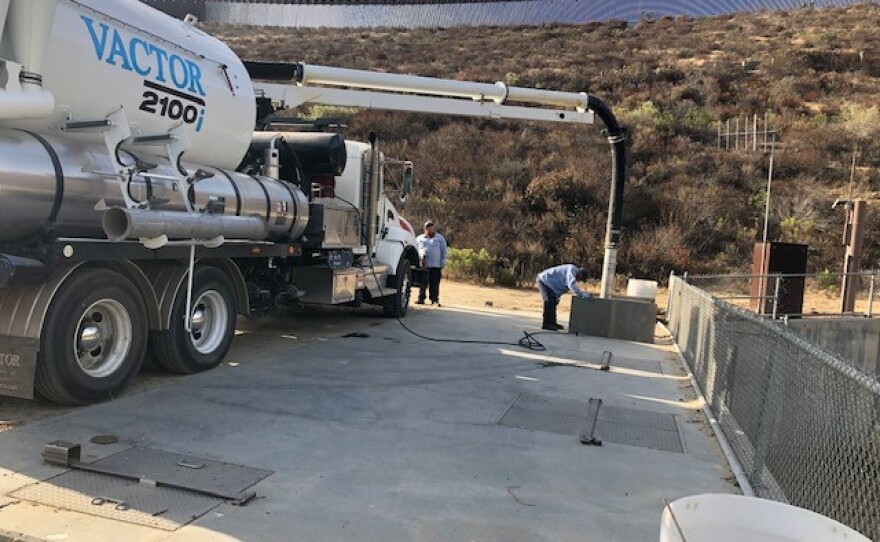U.S. and Mexican officials are doing their best to cope with two major sewage line breaks in a Tijuana canyon.
As a result, Mexico shut down the pump station in the Tijuana River channel allowing more than 30 million gallons of sewage-tainted water to cross the border into the United States every day.
United States International Boundary and Water Commission officials say a 42-inch-wide pipe that carries 25 million gallons of sewage a day and a 54-inch-wide pipe that carries 50 million gallons of sewage south of Tijuana, are both shut down.
The large pipe is completely broken and officials fear the smaller one will break because there has been so much erosion under the pipe in Tijuana’s Matadero Canyon.
Mexican officials have to rebuild the hillside under the pipes before they can fix the sewer lines.

The U.S. International Boundary and Water Commission is working with Mexico to repair the pipes. The U.S. agency has loaned Mexico equipment and is working to find fill to fix the erosion in the canyon.
“I’d say we’re still trying to figure out what the scope of work is and the schedule,” said Morgan Rogers, the area operations manager for the International Boundary and Water Commission. "It could be a matter of this weekend or it could be a week later.”
U.S. officials got the first hint of a problem this past Saturday, when flows from the pipeline break overwhelmed the canyon collector in Smuggler’s Gulch. That collector was shut down to keep sediment out of its pipes. It is operating again.
The situation forced Mexican officials to shut down a pump station in the Tijuana River channel, leading to cross-border flows that top 30 million gallons a day.

Most of that was run through the sewage treatment plan just north of the international border.
“The South Bay International Treatment plant is taking more flow than it was designed for,” said Rogers. “It’s designed and permitted for 25 million gallons per day. Over the past few days we’ve been averaging about 35.”
The plant cannot completely treat all the tainted water it is taking in.
That means the treated water pumped into an ocean outfall and released three miles from shore is not as clean as it should be.
South County beaches could suffer because a monsoonal weather pattern is pushing ocean water from south of the border into waters off the coast of San Diego County.
Imperial Beach Mayor Serge Dedina said this situation is why the Environmental Protection Agency’s plan to create a back-up sewage treatment system on the U.S. side of the border is crucial.
“While this spill is very, very bad, we appreciate how quickly the USIBWC has mobilized to deal with it. We need it done quickly,” Dedina said on his twitter feed.
EPA officials are currently in the midst of an environmental review of a $630 million plan to build more sewage treatment capacity on both sides of the border.










